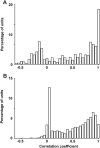Distinct pathways for rule-based retrieval and spatial mapping of memory representations in hippocampal neurons
- PMID: 23325238
- PMCID: PMC3566234
- DOI: 10.1523/JNEUROSCI.3891-12.2013
Distinct pathways for rule-based retrieval and spatial mapping of memory representations in hippocampal neurons
Abstract
Hippocampal neurons encode events within the context in which they occurred, a fundamental feature of episodic memory. Here we explored the sources of event and context information represented by hippocampal neurons during the retrieval of object associations in rats. Temporary inactivation of the medial prefrontal cortex differentially reduced the selectivity of rule-based object associations represented by hippocampal neuronal firing patterns but did not affect spatial firing patterns. In contrast, inactivation of the medial entorhinal cortex resulted in a pervasive reorganization of hippocampal mappings of spatial context and events. These results suggest distinct and cooperative prefrontal and medial temporal mechanisms in memory representation.
Figures








References
-
- Anderson MI, Killing S, Morris C, O'Donoghue A, Onyiagha D, Stevenson R, Verriotis M, Jeffery KJ. Behavioral correlates of the distributed coding of spatial context. Hippocampus. 2006;16:730–742. - PubMed
-
- Apergis-Schoute J, Pinto A, Paré D. Ultrastructural organization of medial prefrontal inputs to the rhinal cortices. Eur J Neurosci. 2006;24:135–144. - PubMed
Publication types
MeSH terms
Grants and funding
LinkOut - more resources
Full Text Sources
Other Literature Sources
Medical
